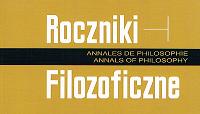Rola obrazów religijnych według Wittgensteina
Wittgenstein on the Role of Religious Pictures
Author(s): Ewa CzesnaSubject(s): Philosophy
Published by: Towarzystwo Naukowe KUL & Katolicki Uniwersytet Lubelski Jana Pawła II
Keywords: the later Wittgenstein; religious beliefs; non-cognitivism; grammatical investigations
Summary/Abstract: According to the later Wittgenstein, religious beliefs are ethically and existentially meaningful, being an important guidance in the life of a believer, and expressing a rule “clothed” in a picture. In the article I try to determine the role of some religious pictures mentioned by the author of “Lectures on Religious Belief”, e.g. the picture of God and the Last Judgment. A key issue of this conception is a denial that religious pictures depict or denote metaphysical reality. The view that a language of religion is non-referential means its deontologisation and is the core of noncognitivism, within the scope of which Wittgenstein offers a functional approach: the philosopher’s task is to describe – by means of grammatical investigations – the use of religious pictures in the practice of a believer. Does Wittgenstein subscribe to radical reductionism, reject metaphysics and reduce religion to ethics? I point out that his analysis of the grammar of the word “God” can be interpreted in the spirit of negative theology. Religious concepts are dissimilar to the ordinary language concepts; the meaning of religious beliefs regarded as cognitive assertions is not clearly defined, they have, so to speak, no (clear) meaning. Hence, one may venture to say that the later Wittgenstein leaves to metaphysics a blank area for “the Inexpressible”. If so, it brings to mind a famous sentence from the Tractatus Logico-Philosophicus: “Whereof one cannot speak, thereof one must be silent”.
Journal: Roczniki Filozoficzne
- Issue Year: 60/2012
- Issue No: 1
- Page Range: 51-66
- Page Count: 16
- Language: Polish

